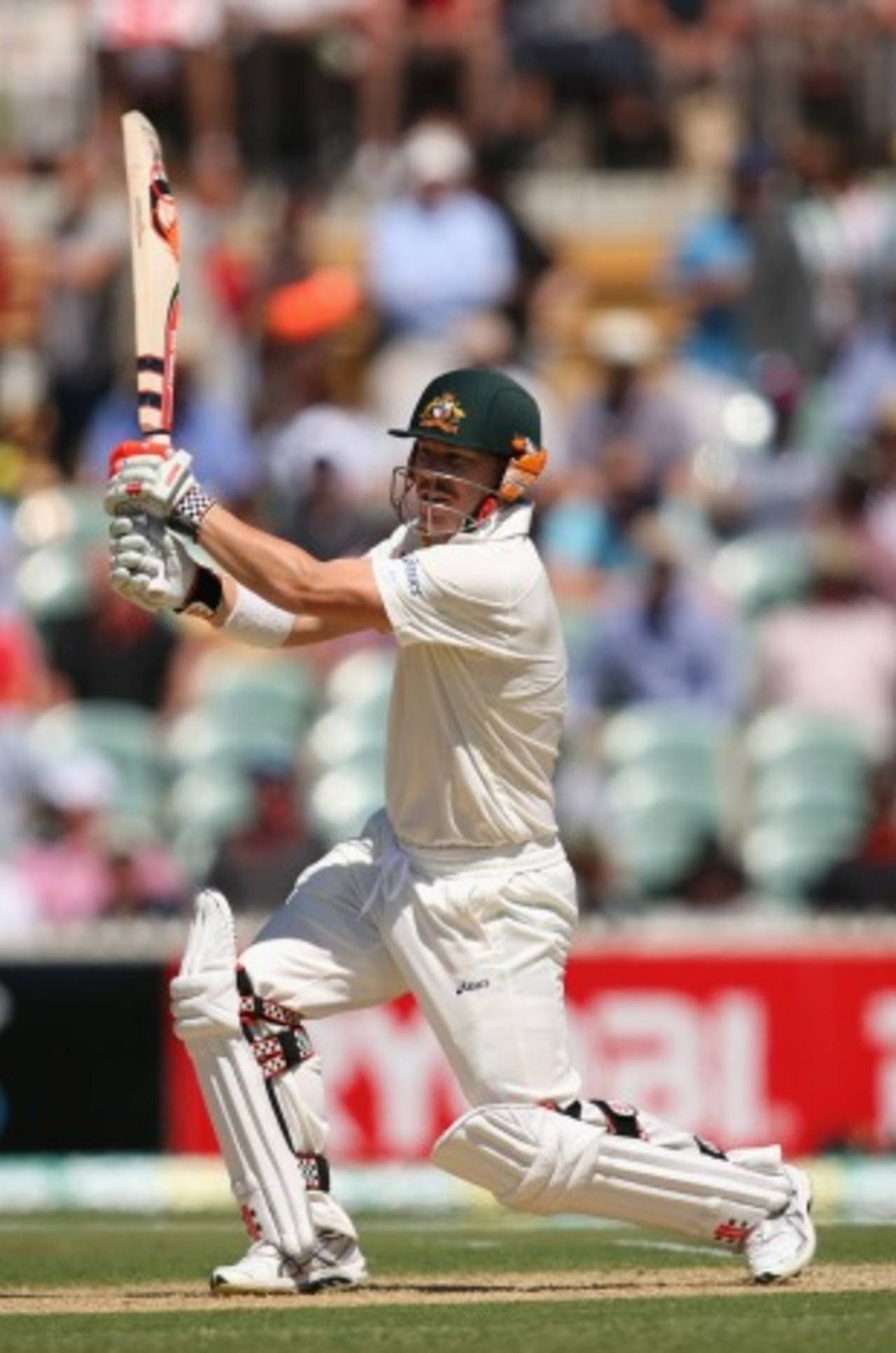Among the various hackneyed phrases uttered by sportsmen, politicians and businessmen, "setting the tone" is one of the most common. A good win sets the tone for the season, a major funding announcement sets the tone for a government seeking a change in fortunes, and a new advertising campaign sets the tone for a fresh corporate identity.
David Warner set the tone for Australia's batsmen on day one of the
second Test, and what an uncontrollable, exhilarating tone it was.
This was ADD cricket, a continuous highlights reel. On an Adelaide Oval made somewhat smaller than usual by major reconstruction work, Warner dictated the most cracking pace for Australia to maintain, seemingly unconcerned by the new ball, the loss of early wickets, or even the speculation around his place in the national team that had swirled around Adelaide for the three training days preceding the toss of the coin.
In doing so Warner completely upended a South African attack that had looked briefly like enjoying a productive day with the ball despite the cloudless sky and blameless pitch. He also encouraged the rest of the batsmen to take similarly brazen liberties, an invitation captain
Michael Clarke, in the batting form of his or anyone's life, had very little hesitation accepting. Warner was dismissed before the day was even halfway done, but its remainder carried his stamp nonetheless.
Clarke had made a curious comment about Warner on the eve of the match. Occasionally given to hyperbole when speaking in public, Clarke remarked that his opening batsman had "come a long way over the last four or five days". In batting terms, Warner needed to, for his muddled and ineffectual innings in Brisbane had done little to convince observers that a run of nine Test innings with only one score above 50 was about to end. Warner's conflicting roles as Test batsman and Twenty20 poster-boy had impinged on his time off between Tests, as he promoted the Australia Day T20 scheduled for Sydney's Olympic Stadium at a time when Clarke and others kept out of the public gaze.
But the time away seems to have helped Warner clear his head of the jumbled thoughts he had exhibited at the Gabba, and he reasoned with something approaching calm fatalism in Adelaide that his best method was to go on the attack, even if it was an approach not given to the consistency that Clarke has shown over the past brilliant year.
"If the ball is there I'm still going to hit it, because that's my game and that's how I score my runs for the team," Warner had said. "If I show intent and put pressure on them by getting a couple away, then I'm winning the battle. At the end of the day, the way I play, I'm going to be hit-and-miss here and there. I'm trying to learn to be a bit more consistent."
So Warner walked to the middle for the second Test with a more focused approach and the confidence provided by a batting surface expected to reward his penchant for shots square of the wicket. A few early deliveries from Morne Morkel thudded into Warner's pads, though the bounce on offer meant he was never in danger of falling lbw. Having read the pitch and the bowling, Warner would launch into a sequence of drives and forcing strokes through the arc from gully to extra cover.
Australia's dominance was complete; they owed plenty to Warner's earlier dash. His striking had emboldened the rest of his team-mates, while cowing South Africa's bowlers.
Wickets fell - first Ed Cowan, then Rob Quiney and lastly Ricky Ponting - but none of these reverses stopped Warner from chasing runs with abandon. This was never clearer than in the over after Ponting had lost his footing and his stumps to a ball of full length from Jacques Kallis. Morkel pitched short, and Warner hooked, the top edge sailing safely over the fine-leg boundary. In Brisbane, Quiney had executed the stroke almost perfectly but picked out Dale Steyn; here, Warner was beaten but unbowed.
This of course was not the only stroke of luck for Australia. The South Africa bowling quintet was to be reduced to a quartet and then a trio by injuries - first a glute strain to Kallis then a tight hamstring for Steyn. That meant more overs to be bowled by the hapless Imran Tahir, who Warner took to with great relish after lunch. Two sixes, two fours and Warner was saluting the crowd for his third Test century, and the best possible counterpunch after the uncertainty of 3 for 55. The celebration arrived amid a sequence of 10 overs after the interval that were ransacked for no fewer than 99 runs. Warner went from 67 at the break to his century in a blink-and-you'll-miss-it 14 balls.
The influence of Warner's innings was powerful, denting South Africa's bowlers so badly that the runs continued to pile up at a breathless rate for the rest of the day. Clarke danced with the fluency possessed by only the greatest batsmen, while
Michael Hussey again proved himself an awesomely destructive No. 6. Clarke crashed Morkel for five boundaries in an over to go to 150, while he went to 200 and Hussey to his century - with a six - off consecutive balls from Tahir.
Despite Hussey's exit to the second new ball when Steyn returned, Australia's dominance was complete; they owed plenty to Warner's earlier dash. His striking had emboldened the rest of his team-mates, while cowing South Africa's bowlers. Warner may be hit and miss, but his ability to set the tone for an innings now seems likely to be cherished by his team-mates and the national selectors for a long time to come.
Daniel Brettig is an assistant editor at ESPNcricinfo. He tweets here
